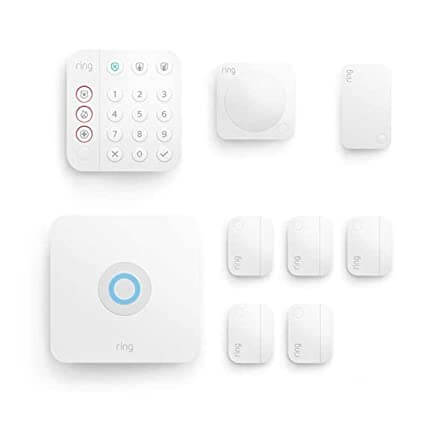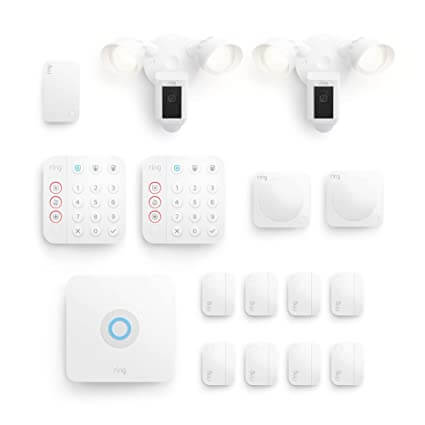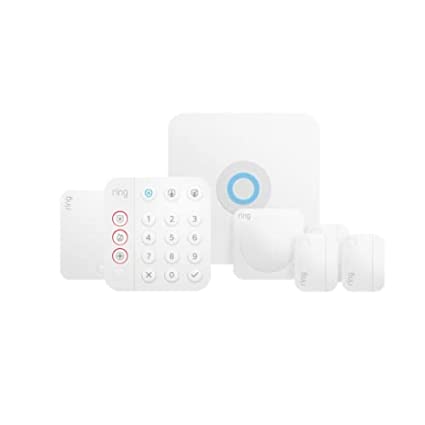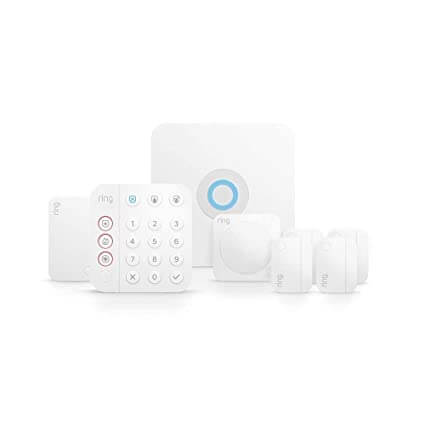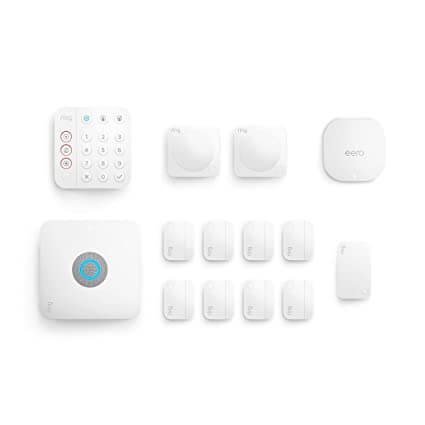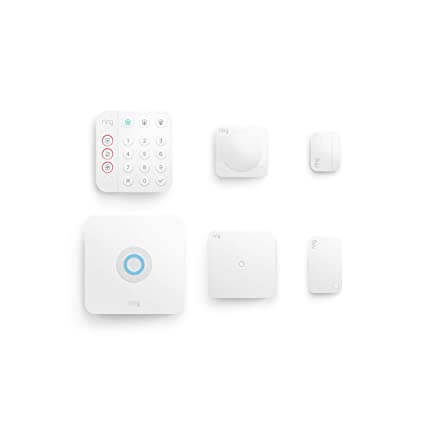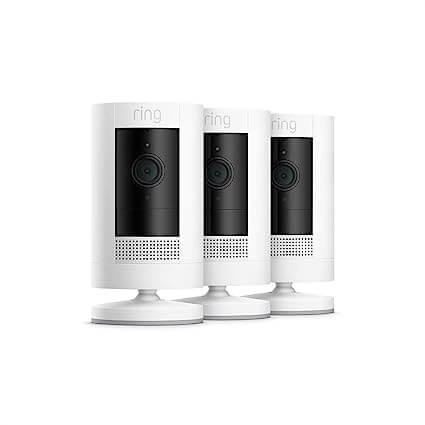Table of Contents
Understanding Motion Warning on Ring: Enhancing Your Home Security
If you’re a Ring user or considering purchasing a Ring device, you may have come across the term “motion warning.” In this article, we will provide a comprehensive understanding of what motion warning on Ring is and how it can enhance your home security. We’ll delve into the features, benefits, and personal experiences to give you valuable insights into this important feature.
What is Motion Warning on Ring?
Motion warning is a feature available on Ring devices that detects motion events and alerts you to potential activity around your property. It utilizes advanced sensors and algorithms to detect movement and promptly notify you via alerts on your connected devices, such as smartphones or tablets.
How Does Motion Warning Work?
Ring devices, equipped with motion sensors, continuously monitor their surroundings. When motion is detected within the device’s field of view, it triggers an alert to notify you of the potential activity. The motion detection settings, including range and sensitivity, can be customized to suit your specific needs.
Benefits of Motion Warning on Ring
1. Enhanced Awareness:
Motion warning provides you with real-time awareness of activity around your property, even when you’re not physically present. This allows you to stay connected and take appropriate action if necessary.
2. Deterrence and Security:
The presence of motion warning can act as a deterrent for potential intruders or suspicious activity. The knowledge that their movements are being monitored can discourage unwanted visitors.
3. Peace of Mind:
With motion warning, you can have peace of mind knowing that you are alerted to any unusual activity around your property. This feature adds an extra layer of security and reassurance.
Customizing Motion Warning Settings
Ring devices offer various customization options for motion warning settings. These include adjusting motion detection zones, setting the sensitivity level, and configuring notification preferences. By fine-tuning these settings, you can tailor the motion warning feature to your specific requirements.
Personal Experiences and Testimonials
Many Ring users have shared their personal experiences with motion warning, highlighting its effectiveness and impact on their home security. For example, Jessica, a homeowner, shared how motion warning alerted her to a potential break-in, enabling her to promptly notify the authorities and prevent a burglary.
How Motion Warning Works: Unveiling the Technology Behind Home Security
If you’ve ever wondered how motion warning works in home security systems, you’re in the right place. In this article, we’ll take a closer look at the technology behind motion warning and explore its inner workings. We’ll uncover the secrets of motion detection, explain the role of sensors and algorithms, and share personal experiences to provide you with a comprehensive understanding of how motion warning works.
Understanding Motion Warning
Motion warning is a vital feature in modern home security systems that alerts homeowners to potential activity around their property. It acts as an extra set of eyes, ensuring that any detected motion triggers a timely notification. But how does this technology actually work?
Motion Detection: The First Step
The foundation of motion warning lies in motion detection. Motion sensors, typically passive infrared (PIR) sensors, detect changes in heat signatures within their range. When a person, animal, or object moves within the sensor’s field of view, it registers the change in temperature and initiates the motion detection process.
Sensors and Algorithms: Working Hand in Hand
Once motion is detected, the sensors transmit the information to the central monitoring unit. This unit, equipped with advanced algorithms, analyzes the incoming data to determine if the detected motion is significant enough to trigger an alert.
The algorithms compare the present sensor data with the baseline or reference data to identify patterns and distinguish between normal background movement and potential threats. By filtering out false positives, the system ensures that only relevant events prompt a motion warning.
Adjusting Sensitivity: Finding the Right Balance
To optimize the performance of motion warning systems, users can adjust the sensitivity settings. Higher sensitivity settings make the system more responsive and prone to detecting even subtle movements. However, this can also increase the likelihood of false alarms triggered by things like tree branches or small animals.
Finding the right balance is crucial to strike a balance between detecting genuine threats and avoiding unnecessary alerts. Adjusting the sensitivity allows you to customize the system to suit the specific environment and your preferences.
Personal Experiences: The Real-World Impact
Real-life experiences further highlight the effectiveness of motion warning technology. Sarah, a homeowner, shared her personal experience where motion warning alerted her to a potential break-in attempt. Thanks to the timely notification, she was able to contact the authorities, who arrived in time to apprehend the intruder.
Benefits of Motion Warning: Enhancing Your Home Security
When it comes to home security, being alerted to potential activity around your property is crucial. Motion warning technology provides an extra layer of protection by notifying you of any detected motion. In this article, we’ll explore the key benefits of motion warning and how it can enhance your home security system. Discover the advantages of this innovative feature and learn from personal experiences to understand the real-world impact it can have on safeguarding your home.
Timely Detection and Alerts
Motion warning ensures that you’re promptly notified of any movement around your property. When a sensor detects motion, an alert is sent to your connected devices, such as smartphones or tablets, keeping you informed in real-time. This allows you to take immediate action, whether it’s contacting the authorities or checking the live feed of your security cameras.
Deterrence against Intruders
The presence of motion warning acts as a powerful deterrent against potential intruders. Criminals are less likely to target properties equipped with visible motion warning systems, knowing that their movements will be detected and alerts will be sent. This added layer of security can significantly reduce the risk of burglary or unauthorized access to your home.
Enhanced Peace of Mind
Knowing that your property is equipped with motion warning technology provides peace of mind. Whether you’re at home or away, you can have confidence in your home security system’s ability to detect and alert you to any suspicious activity. This peace of mind allows you to relax and enjoy a greater sense of security for your family and belongings.
Personalized Customization
Motion warning systems offer customization options to suit your specific needs. You can adjust the sensitivity settings to ensure accurate detection while minimizing false alarms triggered by minor movements like pets or tree branches. Additionally, you can set specific zones where motion detection is prioritized, such as entryways or sensitive areas, providing targeted monitoring where it matters most.
Real-Life Experiences
Personal experiences from homeowners highlight the significant impact of motion warning on home security. John, a Ring user, shared how motion warning alerted him to a potential break-in attempt, enabling him to take immediate action and prevent a burglary. Such firsthand accounts underscore the effectiveness of motion warning in protecting homes and families.
Customizing Motion Warning Settings: Personalize Your Home Security
When it comes to home security, customization is key. One of the essential aspects of any security system is the ability to customize its settings to suit your specific needs. In this article, we’ll explore the importance of customizing motion warning settings and how it empowers you to personalize your home security. Discover the flexibility and control you have over your motion warning system and learn from personal experiences to make the most out of this feature.
Adjusting Sensitivity
One of the primary customization options for motion warning settings is adjusting the sensitivity level. By fine-tuning the sensitivity, you can determine the threshold at which the system detects motion. Higher sensitivity settings make the system more responsive, detecting even the slightest movements. Lower sensitivity settings, on the other hand, reduce the chances of false alarms triggered by minor activities like pets or passing vehicles.
Setting Motion Detection Zones
Motion warning systems allow you to define specific areas, or zones, where motion detection is prioritized. This feature is particularly useful if you want to monitor specific entryways, driveways, or high-traffic areas. By setting motion detection zones, you can focus on areas of importance and minimize unnecessary alerts triggered by motion in less critical areas.
Customizing Notification Preferences
Another aspect of customizing motion warning settings is configuring your notification preferences. You can choose the type of notifications you receive, such as push notifications on your smartphone, email alerts, or even text messages. Tailor the notifications to your preferences, ensuring you’re alerted in a way that is convenient and effective for you.
Learning from Personal Experiences
Personal experiences play a significant role in optimizing motion warning settings. For example, Lisa, a homeowner, shared her experience of adjusting sensitivity and motion detection zones based on her property’s layout. By fine-tuning these settings, she minimized false alarms while maintaining effective coverage of critical areas.
Regular Monitoring and Adjustments
Customization is an ongoing process. Regularly monitor and evaluate the performance of your motion warning system. Pay attention to any false alarms or missed detections and make necessary adjustments to the settings. Over time, you’ll be able to find the optimal configuration that meets your unique requirements.
Avoiding False Alarms: Enhancing the Accuracy of Your Motion Warning System
When it comes to home security, the accuracy of your motion warning system is crucial. False alarms can be inconvenient, disruptive, and lead to complacency over time. In this article, we’ll explore effective strategies to avoid false alarms and enhance the accuracy of your motion warning system. Learn from personal experiences and discover practical tips to ensure that your system only alerts you when it truly matters.
Fine-Tune Sensitivity Settings
One of the primary causes of false alarms is overly sensitive motion detection. To avoid unnecessary alerts triggered by minor movements, consider adjusting the sensitivity settings of your motion warning system. Start by reducing the sensitivity level gradually until you reach a point where it accurately detects significant movements while minimizing false positives.
Set Up Motion Detection Zones
Another effective way to prevent false alarms is by setting up motion detection zones. By defining specific areas where motion detection is prioritized, you can focus on key entryways, driveways, or other critical areas. Exclude areas prone to false triggers, such as tree branches or busy streets, from the motion detection zones to reduce false alarms.
Avoid Obstructing the Camera’s View
Ensure that the camera’s view is unobstructed to prevent false alarms caused by objects or obstructions moving in the camera’s line of sight. Trim tree branches, secure loose objects, and position the camera in a way that minimizes the chances of unintentional triggers.
Regular Maintenance and Cleaning
Maintaining your motion warning system is essential to avoid false alarms. Regularly clean the camera lens to ensure clear visibility. Check for any loose connections or issues with the system’s components that may lead to false triggers. Keeping your system in good working condition reduces the likelihood of false alarms.
Learn from Personal Experiences
Personal experiences and feedback from other users can provide valuable insights into avoiding false alarms. John, a homeowner, shared his experience of adjusting sensitivity and motion detection zones to minimize false alerts. Such real-life examples demonstrate the practical steps you can take to improve the accuracy of your system.
Integrating Motion Warning with Ring’s Ecosystem: Enhancing Your Home Security
In today’s interconnected world, seamless integration of home security systems is essential for comprehensive protection. When it comes to motion warning, integrating it with Ring’s ecosystem offers a powerful combination of features and functionality. In this article, we’ll explore the benefits and personal experiences of integrating motion warning with Ring’s ecosystem, and how it can enhance your overall home security.
Seamless Integration for Enhanced Coverage
Integrating motion warning with Ring’s ecosystem allows for seamless integration of multiple devices, such as cameras, doorbell cameras, and security systems. This interconnected network provides enhanced coverage and a unified approach to monitoring and detecting motion around your home. With the ability to sync and control all devices from a single app, you can conveniently manage and monitor your home security.
Smart Notifications and Alerts
When motion is detected, the integration with Ring’s ecosystem enables smart notifications and alerts on your smartphone or other connected devices. These notifications provide real-time updates, allowing you to take immediate action if needed. Personal experiences have shown how this feature has helped homeowners quickly respond to potential security threats, ensuring peace of mind even when away from home.
Automation and Smart Home Integration
Integrating motion warning with Ring’s ecosystem opens up possibilities for automation and smart home integration. For example, you can configure your motion warning system to trigger other connected devices, such as turning on lights or activating sirens, creating a more robust deterrent against potential intruders. Personal experiences have highlighted the convenience and effectiveness of these automated features.
User-Friendly Interface and Control
Ring’s ecosystem provides a user-friendly interface and intuitive controls, making it easy to manage and customize your motion warning settings. Personal experiences have shown how homeowners have appreciated the simplicity and convenience of controlling their motion warning system alongside other Ring devices through a single app.
Continuous Updates and Enhancements
Ring’s commitment to innovation means that their ecosystem and motion warning features are continuously updated and enhanced. Regular software updates provide access to new features, performance improvements, and increased functionality. Personal experiences have shown how these updates have added value and improved the overall user experience.
Personal Experience and Testimonials: Real Stories of Enhanced Home Security
When it comes to home security, personal experiences and testimonials provide valuable insights into the effectiveness and reliability of various systems and solutions. In this article, we’ll dive into real stories and testimonials from homeowners who have experienced firsthand the benefits of robust home security measures. Discover their personal experiences and how it has transformed their sense of safety and peace of mind.
Sarah’s Story: Peace of Mind During Vacations
Sarah, a frequent traveler, shares her personal experience of installing a comprehensive home security system. With features such as video doorbells, motion detection cameras, and smart locks, Sarah can remotely monitor her property and receive real-time alerts while she’s away. She recalls how this system gave her peace of mind during her vacations, knowing that her home was well-protected and any unusual activity would be immediately detected.
Mark’s Testimonial: Swift Response to Potential Threats
Mark’s testimonial emphasizes the importance of quick response to potential threats. He shares how his motion warning system detected suspicious activity near his property late at night. The system promptly sent alerts to his smartphone, allowing him to assess the situation and contact the authorities if necessary. Mark credits the swift response to the motion warning system for preventing a potential break-in and ensuring the safety of his family and belongings.
Emily’s Experience: Deterrence and Peace of Mind
Emily’s personal experience revolves around the deterrent effect of visible security measures. She recounts how the installation of outdoor security cameras and motion-activated lights significantly reduced the occurrence of suspicious activity around her home. The mere presence of these security measures acted as a deterrent, providing Emily with a greater sense of safety and peace of mind.
Tom’s Testimonial: Enhanced Convenience and Control
Tom’s testimonial focuses on the convenience and control offered by modern home security systems. He describes how he can easily manage his security devices through a centralized app, allowing him to arm and disarm his system, control access to his home, and monitor his property with just a few taps on his smartphone. Tom appreciates the ease of use and the added convenience that comes with a fully integrated home security system.
Jennifer’s Experience: Improved Family Safety
Jennifer shares her experience of improved family safety thanks to the implementation of a comprehensive home security system. With features such as smart locks and door/window sensors, Jennifer has greater control over who enters her home, ensuring the safety of her children. She expresses gratitude for the added layer of protection and the peace of mind it brings to her daily life.
Frequently Asked Questions (FAQ): Your Ultimate Guide
Have questions about home security systems? Look no further! In this comprehensive FAQ guide, we’ll address the most commonly asked questions about home security and provide you with valuable insights to help you make informed decisions. Whether you’re a homeowner or a renter, this guide will cover everything you need to know about securing your property and ensuring the safety of your loved ones.
1. What are the key benefits of installing a home security system?
Installing a home security system offers numerous benefits, including:
- Enhanced Protection: Home security systems act as a deterrent against potential intruders, protecting your property and belongings.
- 24/7 Monitoring: With professional monitoring services, your home is monitored round the clock, providing peace of mind even when you’re away.
- Fire and Carbon Monoxide Detection: Many home security systems include smoke detectors and carbon monoxide sensors, alerting you to potential dangers.
- Remote Access and Control: Modern systems allow you to remotely monitor and control your security devices through smartphone apps.
2. What components should a comprehensive home security system include?
A comprehensive home security system may include the following components:
- Security Cameras: These provide video surveillance of your property, allowing you to monitor and record activities.
- Motion Sensors: These detect movement and trigger alarms or notifications, alerting you to potential intrusions.
- Door and Window Sensors: These sensors detect unauthorized entry and can trigger alarms or send alerts.
- Smart Locks: These allow you to lock and unlock doors remotely, providing convenient access control.
3. How do I choose the right home security system for my needs?
When choosing a home security system, consider the following factors:
- Budget: Determine your budget and find a system that offers the right balance of features and affordability.
- Property Size: Consider the size of your property and the number of entry points that need to be secured.
- Monitoring Options: Decide if you prefer professional monitoring or self-monitoring through smartphone apps.
- Additional Features: Evaluate additional features like home automation integration, video doorbells, and environmental sensors.
4. Are wireless security systems better than wired ones?
Wireless security systems offer several advantages, including:
- Easy Installation: Wireless systems are easier to install since they don’t require complex wiring.
- Flexibility: Wireless systems can be easily moved or expanded, making them suitable for renters or those who frequently move.
- Remote Access: Wireless systems allow for remote access and control through smartphone apps.
5. How effective are security cameras in deterring crime?
Security cameras are highly effective deterrents against crime. Studies have shown that the presence of visible security cameras significantly reduces the likelihood of burglary and vandalism. Additionally, recorded footage can aid in identifying criminals and providing evidence to law enforcement.
